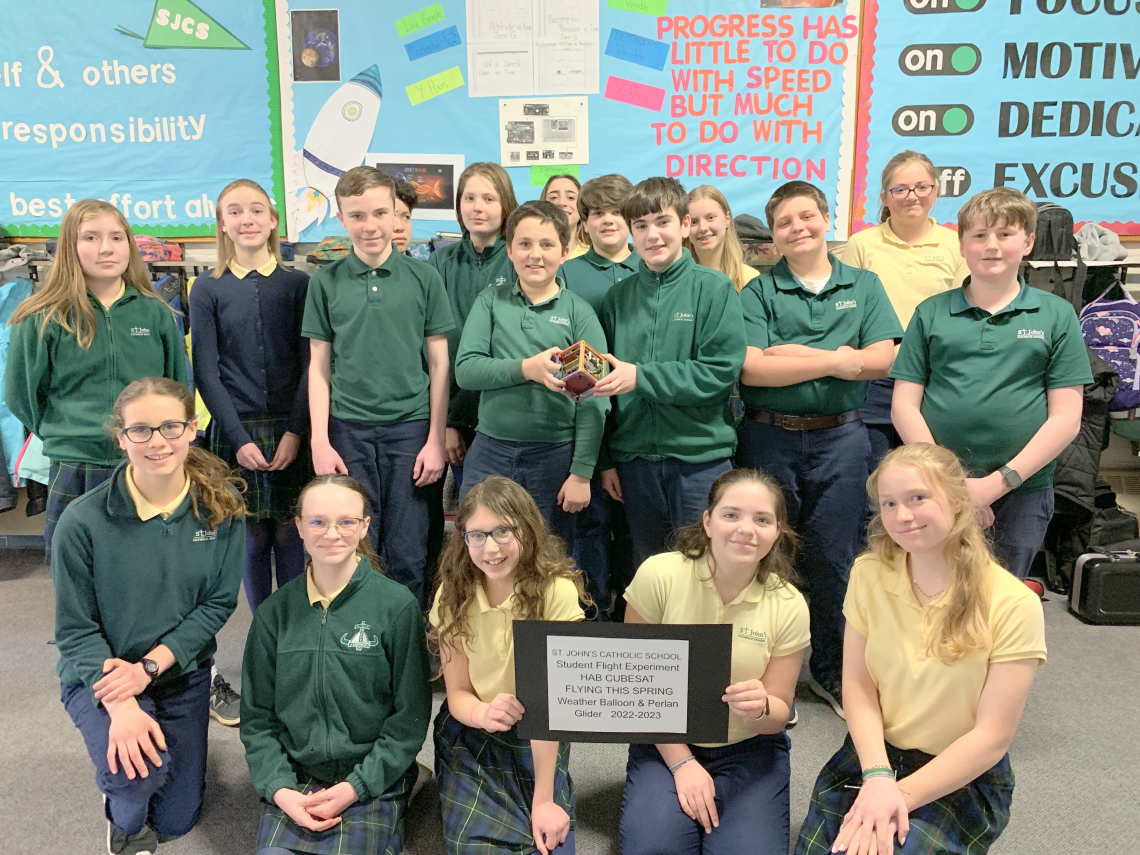St. John’s Students Science Experiment Headed from Brunswick to Stratosphere

BRUNSWICK---Middle school students at St. John’s Catholic School in Brunswick will be analyzing flight data based on an experiment they created when the Airbus Perlan Mission II heads to 90,000 feet this fall.
“It’s amazing that an experiment they built is on the flight,” said Karin Paquin, a science teacher at St. John’s.
The experiment is part of the Perlan Project, an aerospace nonprofit that advances discovery related to high-altitude flight, weather, and climate change, and encouraged the design and build of experiments in CubeSats that will soar to the edge of space on board the Perlan 2 sailplane. The one-of-a-kind glider has two pilots but no engine and is expected to set a new aviation altitude world record this year for piloted level flight.
“We’re heading to 90,000 feet and want to inspire the next generation of aerospace engineers, environmental researchers, and educators,” said Ed Warnock, CEO of the Perlan Project.
Student experiments from Kansas, New Mexico, New York, and Maine were selected for the program. The St. John’s project is entitled “Atmosphere and Radiation Investigator.”
“The experiment is designed to help students better understand the variables that affect the human body while in flight,” said Paquin. “Last spring, these students spent nine weeks exploring what it would take to build a colony on Mars. After researching many variables, students tested these through simulations with SIMOC (Scalable, interactive model of an off-world community) software. Many still had questions that were unanswered about conditions in a closed environment.”
The Atmosphere and Radiation Investigator would offer the opportunity to answer these questions through sensor experiments, allowing the children to explore the data.
“Just some of the questions they are interested in are how does temperature inside a closed-pressurized environment change? How high can radiation levels go inside of a closed environment, particularly gamma and UV radiation? Does radiation make sound and if it does can we minimize the effects of it? Sensors include temperature, gamma and UV radiation, sound (ultrasonic and microphone), environmental, photosensor, and Wi-Fi,” said Paquin.
The amazing experience is just the latest connected to the middle school program at St. John’s. Last year, Paquin was selected as one of five teachers across the nation to participate in the Teachers in Space (TIS) Human Flight Program. Through this project, she flew with a student designed CubeSat on a Zero-G microgravity flight in November 2022. The St. John’s students were able to analyze data from this flight to develop conclusions to their hypothesis questions and redesign their CubeSat experiments. In April, she presented her and her students’ work at the National Space Symposium in Colorado Springs, Colorado. In May, an astronaut spoke with St. John’s students to commemorate Maine Space Day.
“We are headed into a time like no other in space exploration opportunities,” said Paquin. “The students we teach today will have the opportunity to explore and work in space in ways we can only imagine.”










